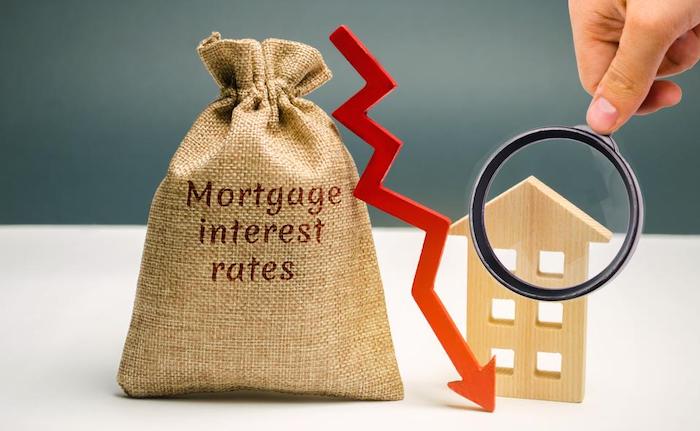Understanding the impact of interest rates on mortgage affordability is important for anyone considering purchasing a home. Interest rates can significantly affect how much a borrower can afford to borrow and the total cost of the loan. This article will provide an overview of how interest rates affect mortgage affordability and tips on maximizing affordability when shopping for a mortgage. With a better understanding of how interest rates affect mortgage affordability, borrowers can make more informed decisions when shopping for a mortgage.
Exploring the Relationship Between Interest Rates and Mortgage Affordability
Exploring the relationship between interest rates and mortgage affordability is important in understanding the housing market. Interest rates are a key factor in determining how much money a borrower can borrow and how much they will pay in interest over the life of the loan. Mortgage affordability is the ability of a borrower to make their monthly mortgage payments. It is a major factor in determining whether or not they can purchase a home.
Interest rates are determined by various factors, including the current economic climate, the Federal Reserve’s monetary policy, and the demand for mortgage loans. When interest rates are low, it makes it easier for borrowers to qualify for a loan and to make their monthly payments. Low-interest rates also make it easier for borrowers to purchase a home, as they can borrow more money at a lower cost.
On the other hand, when interest rates are high, it can make it more difficult for borrowers to qualify for a loan and to make their monthly payments. High-interest rates also make it more difficult for borrowers to purchase a home, as they will need to borrow more money at a higher cost.
The relationship between interest rates and mortgage affordability is important to understand. Low-interest rates make it easier for borrowers to qualify for a loan and to make their monthly payments, while high-interest rates make it more difficult. Understanding this relationship can help borrowers make informed decisions about their mortgage and can help them make sure they can purchase a home that is within their budget.
Examining the Impact of Interest Rate Changes on Mortgage Payments
Interest rate changes can have a major impact on mortgage payments. When interest rates rise, mortgage payments increase, and when interest rates fall, mortgage payments decrease. For homeowners, understanding the effects of interest rate changes on mortgage payments is essential to budgeting and planning for the future.
When interest rates rise, the amount of money a homeowner pays each month on their mortgage increases. This is because the interest rate affects the total amount of money that must be paid back over the life of the loan. The higher the interest rate, the more money the homeowner must pay back in interest. This increase in the total amount of money that must be paid back over the life of the loan results in an increase in the monthly mortgage payment.
Conversely, when interest rates fall, the amount of money a homeowner pays each month on their mortgage decreases. This is because the lower interest rate reduces the total amount of money that must be paid back over the life of the loan. The lower the interest rate, the less money the homeowner must pay back in interest. This decrease in the total amount of money that must be paid back over the life of the loan results in a reduction of the monthly mortgage payment.
For homeowners, understanding the impact of interest rate changes on mortgage payments is essential to budgeting and planning for the future. Knowing how interest rate changes affect their monthly mortgage payments can help homeowners plan for the future and make informed financial decisions. Homeowners should be aware of the current interest rate environment and how it could affect their mortgage payments in the future.
In addition, homeowners should be aware of the potential impact of interest rate changes on their ability to refinance their mortgage. With low-interest rates, homeowners can refinance their mortgages and lower monthly payments. Conversely, when interest rates are high, homeowners may be unable to refinance their mortgage and may have to pay higher monthly payments.
Overall, understanding the impact of interest rate changes on mortgage payments is essential for homeowners. Knowing how interest rate changes affect their monthly mortgage payments can help homeowners budget for the future and make informed decisions about their finances.
Analyzing the Impact of Interest Rates on Homeownership
Interest rates have a major impact on homeownership. When interest rates are low, it makes it easier for people to purchase a home. Low-interest rates mean that people can borrow money to buy a home at a lower cost. This makes it more affordable for people to buy a home, and it also increases the demand for housing.
When interest rates are high, it makes it more difficult for people to purchase a home. High-interest rates mean that people have to pay more for their mortgages, making it harder for them to afford a home. This reduces the demand for housing, and it can also lead to people being unable to make their mortgage payments.
Analyzing the impact of interest rates on homeownership is important for understanding the housing market. When interest rates are low, it can lead to an increase in home sales and prices. When interest rates are high, it can lead to a decrease in home sales and prices.
Analyzing the impact of interest rates on homeownership also helps to understand the overall economy. Low-interest rates can lead to an increase in economic activity, as people are more likely to borrow money to purchase a home. High-interest rates can lead to a decrease in economic activity, as people are less likely to borrow money to purchase a home.
When analyzing the impact of interest rates on homeownership, it is important to consider the long-term effects. Low-interest rates can lead to an increase in home prices, but this can also lead to a decrease in affordability over time. High-interest rates can lead to a decrease in home prices, but this can also lead to an increase in affordability over time.
Analyzing the impact of interest rates on homeownership is a complex process. It requires looking at the current market conditions, as well as the long-term effects of interest rates. By understanding the impact of interest rates on homeownership, it is possible to make more informed decisions about the housing market.
Investigating the Effect of Interest Rates on Mortgage Lending
Investigating the effect of interest rates on mortgage lending is an important part of understanding the mortgage market. Interest rates are one of the most important factors that influence the cost of borrowing money for a mortgage. When interest rates are low, borrowers are more likely to take out a mortgage loan, and when interest rates are high, borrowers are less likely to take out a mortgage loan.
Interest rates are determined by a variety of factors, including the Federal Reserve’s monetary policy, the strength of the economy, and the level of inflation. When the Federal Reserve raises interest rates, it makes it more expensive for borrowers to take out a mortgage loan. This can lead to fewer people taking out mortgage loans, which can have a negative effect on the housing market.
When investigating the effect of interest rates on mortgage lending, it is important to consider the impact of the different types of mortgage loans available. Fixed-rate mortgages are the most common type of mortgage loan, and they are characterized by a fixed interest rate over the life of the loan. Adjustable-rate mortgages, on the other hand, have an interest rate that can change over time.
When interest rates are low, fixed-rate mortgages are more attractive to borrowers because they can lock in a low-interest rate for the life of the loan. Adjustable-rate mortgages, however, can be more attractive when interest rates are high because the interest rate can be adjusted to reflect the current market conditions.
Investigating the effect of interest rates on mortgage lending can also help to identify potential opportunities for lenders. When interest rates are low, lenders may be able to offer more competitive rates to borrowers, which can lead to an increase in the number of borrowers taking out mortgage loans. On the other hand, when interest rates are high, lenders may be able to charge higher rates, which can lead to fewer borrowers taking out mortgage loans.
Overall, investigating the effect of interest rates on mortgage lending is an important part of understanding the mortgage market. By understanding how interest rates affect the cost of borrowing money for a mortgage, lenders can better identify potential opportunities for growth and profitability.
Assessing the Impact of Interest Rates on Mortgage Refinancing Options
Interest rates play a significant role in determining the cost of a mortgage and the options available to borrowers. When interest rates are low, borrowers can take advantage of refinancing options that can save them money. When interest rates are high, borrowers may be less likely to refinance their mortgage.
When assessing the impact of interest rates on mortgage refinancing options, it is important to consider the type of loan and the current market conditions. Fixed-rate mortgages are the most common type of loan and are typically the most stable. These loans are not affected by changes in interest rates, so borrowers can expect their monthly payments to remain the same throughout the life of the loan. Adjustable-rate mortgages, on the other hand, are affected by changes in interest rates. When interest rates are low, borrowers may be able to take advantage of lower monthly payments. However, when interest rates are high, borrowers may be forced to pay higher monthly payments.
In addition to the type of loan, the current market conditions must also be taken into account when assessing the impact of interest rates on mortgage refinancing options. When the market is stable, borrowers may be able to take advantage of lower interest rates and more favorable terms. However, when the market is volatile, borrowers may be less likely to refinance their mortgage due to the risk of higher interest rates and unfavorable terms.
When assessing the impact of interest rates on mortgage refinancing options, it is important to consider the type of loan, the current market conditions, and the borrower’s financial situation. By taking all of these factors into account, borrowers can make an informed decision about whether or not to refinance their mortgage.




